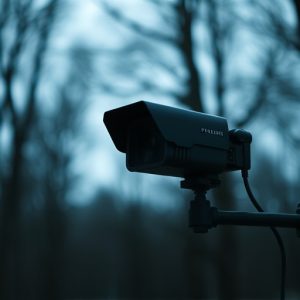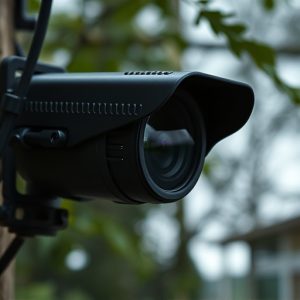Mastering Hidden Camera Placement: A Guide for Discreet Home Monitoring
In today's digital age, hidden cameras offer a discrete yet effective solution for home securit…….
In today's digital age, hidden cameras offer a discrete yet effective solution for home security, allowing homeowners to remotely monitor properties and respond to potential threats. Strategic placement in high-risk areas like entrances, kitchens, and living rooms ensures clear footage. Advanced hiding techniques integrate cameras into everyday objects, providing unobtrusive surveillance while maintaining aesthetics. Balancing security needs with legal/ethical boundaries, including respecting privacy rights and adhering to local laws, is crucial for effective yet responsible hidden camera usage for home monitoring.
In today’s digital era, hidden cameras have become essential tools for home monitoring, offering discreet surveillance solutions. However, effective camera concealment is crucial for maintaining privacy and preventing unwanted detection. This comprehensive guide explores strategic placement techniques, advanced hiding methods, and legal considerations surrounding the use of hidden cameras for home security, empowering readers to make informed decisions for enhanced safety without compromising ethics.
- Understanding the Need for Discreet Surveillance
- Choosing the Right Location: Strategizing Camera Placement
- Advanced Hiding Techniques for Unobtrusive Monitoring
- Legal Considerations and Ethical Use of Hidden Cameras
Understanding the Need for Discreet Surveillance
In today’s digital era, home monitoring and security have become paramount concerns for many individuals seeking to protect their families and properties. Hidden cameras for home monitoring offer a discreet and effective solution, allowing property owners to keep a vigilant eye on their surroundings without compromising aesthetics or privacy. Understanding the need for discreet surveillance is the first step in implementing a comprehensive security system.
Discreet camera placement ensures that potential intruders are unaware of the presence of surveillance equipment, reducing the likelihood of malicious activities. Moreover, hidden cameras provide a sense of peace and security, enabling homeowners to remotely monitor their properties, detect unusual behavior, and respond swiftly to any potential threats. This proactive approach to home security is particularly valuable for those living in areas with high crime rates or looking to safeguard valuable assets.
Choosing the Right Location: Strategizing Camera Placement
When setting up hidden cameras for home monitoring, choosing the right location is paramount. Strategize camera placement based on areas that require close surveillance—entrances, exits, and common areas like kitchens and living rooms are prime spots. Consider points of blind spot elimination; position cameras where they can capture clear views without obstructions like furniture or decor items. The goal is to create a comprehensive security network that covers all angles, ensuring potential intruders or suspicious activities are captured in high-quality footage.
Think strategically about the environment and behaviors you want to monitor. For instance, near windows, outdoor areas, or corridors can benefit from cameras placed high enough to deter would-be thieves while capturing footage without obvious lines of sight. In residential settings, combining indoor and outdoor camera placements offers a multi-layered approach to home security, providing peace of mind and valuable evidence in the event of an incident.
Advanced Hiding Techniques for Unobtrusive Monitoring
In the realm of home monitoring, advanced hiding techniques for security cameras enable unobtrusive surveillance, enhancing safety without compromising aesthetics. Hidden cameras, cleverly integrated into everyday objects or discreetly placed in hard-to-notice locations, offer a subtle yet powerful way to protect your space. These innovative solutions include camouflaging cameras that mimic common household items like electrical outlets, smoke detectors, or even artificial plants, ensuring they blend seamlessly into the environment.
By employing such techniques, homeowners can maintain a sense of security while avoiding the unsightly appearance often associated with traditional surveillance equipment. Whether for indoor or outdoor use, these hidden cameras provide peace of mind, allowing you to monitor your home’s activity without becoming apparent to potential intruders.
Legal Considerations and Ethical Use of Hidden Cameras
When employing hidden cameras for home monitoring, it’s crucial to navigate a delicate balance between effective security measures and legal/ethical boundaries. The use of surveillance technology raises privacy concerns, making it essential to understand local laws regarding hidden cameras. Many jurisdictions have specific regulations on where and how such devices can be installed, particularly in homes, offices, or public spaces. Non-compliance can lead to severe legal repercussions, including fines and potential criminal charges.
Ethical considerations also play a significant role in the responsible use of hidden cameras. Homeowners should respect the privacy rights of tenants, employees, or visitors, only capturing footage in areas with legitimate security needs. Transparency is key; disclosing the presence of surveillance systems can foster trust and reduce potential legal issues. Balancing these factors ensures that hidden cameras for home monitoring serve their purpose without encroaching on individual freedoms.
When it comes to home monitoring with hidden cameras, a balanced approach is key. While these devices offer enhanced security and peace of mind, their discreet nature necessitates strategic placement and an awareness of legal boundaries. By understanding the art of camera concealment, you can create an effective surveillance system that respects privacy while safeguarding your property. Remember, responsible use of technology ensures a secure home without compromising ethical standards.


